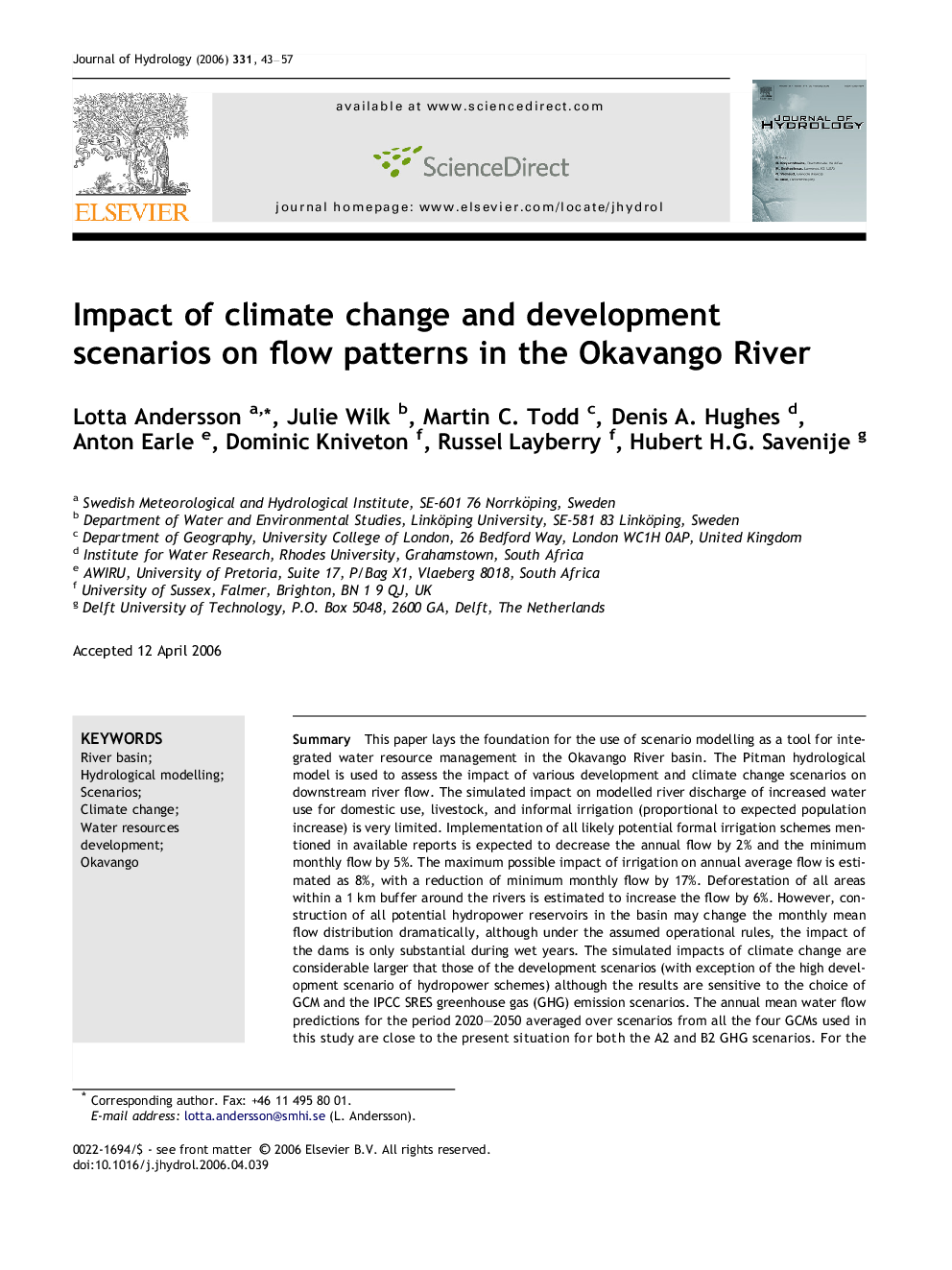| کد مقاله | کد نشریه | سال انتشار | مقاله انگلیسی | نسخه تمام متن |
|---|---|---|---|---|
| 4580347 | 1630153 | 2006 | 15 صفحه PDF | دانلود رایگان |

SummaryThis paper lays the foundation for the use of scenario modelling as a tool for integrated water resource management in the Okavango River basin. The Pitman hydrological model is used to assess the impact of various development and climate change scenarios on downstream river flow. The simulated impact on modelled river discharge of increased water use for domestic use, livestock, and informal irrigation (proportional to expected population increase) is very limited. Implementation of all likely potential formal irrigation schemes mentioned in available reports is expected to decrease the annual flow by 2% and the minimum monthly flow by 5%. The maximum possible impact of irrigation on annual average flow is estimated as 8%, with a reduction of minimum monthly flow by 17%. Deforestation of all areas within a 1 km buffer around the rivers is estimated to increase the flow by 6%. However, construction of all potential hydropower reservoirs in the basin may change the monthly mean flow distribution dramatically, although under the assumed operational rules, the impact of the dams is only substantial during wet years. The simulated impacts of climate change are considerable larger that those of the development scenarios (with exception of the high development scenario of hydropower schemes) although the results are sensitive to the choice of GCM and the IPCC SRES greenhouse gas (GHG) emission scenarios. The annual mean water flow predictions for the period 2020–2050 averaged over scenarios from all the four GCMs used in this study are close to the present situation for both the A2 and B2 GHG scenarios. For the 2050–2080 and 2070–2099 periods the all-GCM mean shows a flow decrease of 20% (14%) and 26% (17%), respectively, for the A2 (B2) GHG scenarios. However, the uncertainty in the magnitude of simulated future changes remains high. The simulated effect of climate change on minimum monthly flow is proportionally higher than the impact on the annual mean flow.
Journal: Journal of Hydrology - Volume 331, Issues 1–2, 30 November 2006, Pages 43–57